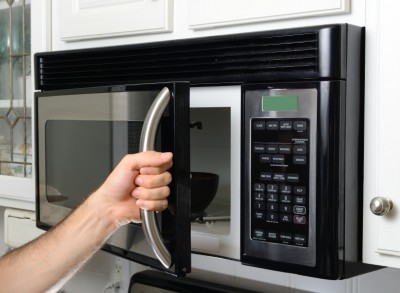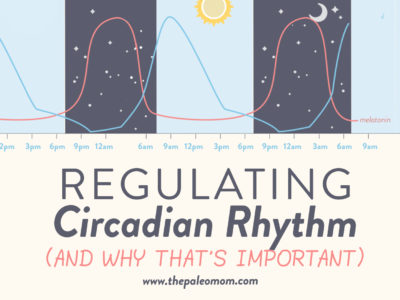Microwaves are a hot topic in the health community (pun intended!), and the internet is full of claims that they leak radiation, destroy nutrients, change the chemical structure of food to become toxic, and pose a wide variety of health risks. Even the term “nuking” our food brings to mind scary images of atomic bombs and radiation exposure! The rumors about microwaves’ harmfulness have prompted a number of people to stop using them entirely. But, are these claims really founded in science?
Table of Contents[Hide][Show]
- How Do Microwaves Work? (aka Am I being irradiated?!?!)
- The Nutritional Effects of “Nuking” Foods
- Do Microwaves Make Food Become Toxic?
- Don’t Microwaves Kill Enzymes and Make Food “Dead”?
- What About the Studies Showing Harm?
- What About Standing Close to a Microwave While it’s Running?
- The Take-Home Message
- Citations
To find out, let’s take a look at exactly how microwaves work, and what the scientific literature says about their safety and nutritional effects!
How Do Microwaves Work? (aka Am I being irradiated?!?!)
Microwaves heat up food by exposing polar molecules (such as water, which has one positively charged side and one negatively charged side) to electromagnetic waves within the microwave spectrum, around 2.45 GHz—a wavelength between radio frequency and infrared radiation. When exposed to these electromagnetic waves, polar molecules react by rapidly spinning clockwise and then counterclockwise over and over again, due to the alternating electric fields causing the molecules to change the direction of their rotation. (In fact, they reverse direction about 2.5 billion times per second!) The agitated polar molecules gather up lots of thermal energy that can rub off on nearby molecules, causing the food to heat up quickly.
This whole process is a form of non-ionizing radiation, which is completely different from the ionizing radiation produced by x-rays, ultraviolet (UV) light, and atomic bombs. Ionizing radiation changes the structure, composition, and properties of atoms, and causes charged particles (ions) to split off from molecules. Non-ionizing radiation, on the other hand, doesn’t produce enough energy to ionize anything; it only transfers energy to atoms to cause vibrations (resulting in heat). We’re exposed to plenty of non-ionizing radiation each day from sound waves, radio waves, and visible light (yay for rainbows!)! These forms of radiation don’t make things radioactive or change the structure or atoms or break DNA bonds, or pose the same health risks we typically associate with the word “radiation.”
Save 80% Off the Foundations of Health
Expand your health knowledge on a wide range of topics relevant to you, from how to evaluate scientific studies, to therapeutic diet and lifestyle, to leaky gut and gut microbiome health, to sustainable weight loss, and much more!!!

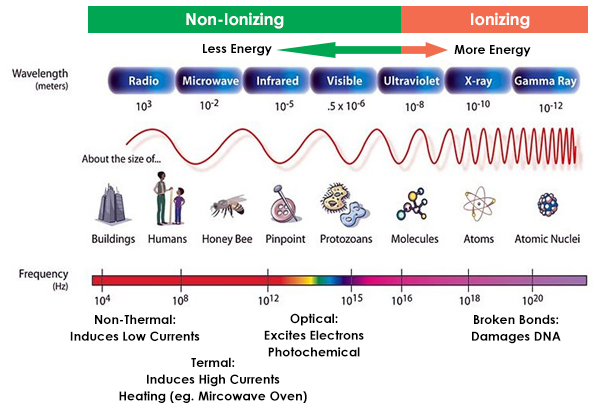
The Nutritional Effects of “Nuking” Foods
A variety of websites, articles, and health authorities have claimed that microwaves destroy more nutrients than other forms of cooking, leaving normally healthy foods devoid of their beneficial components. (Some of the more extreme claims state that microwaving destroys all the nutritional value of a food.) But, the scientific research shows no such thing!
In one study, microwaved pork and chicken retained significantly more thiamine and vitamin B6 than the same foods cooked in a conventional oven. Microwaving breast milk has been shown to preserve the original vitamin and polyunsaturated fat content, with no harm to important immunoglobins up until 60°C/140°F (at which point, any form of cooking will start damaging the more sensitive molecules).
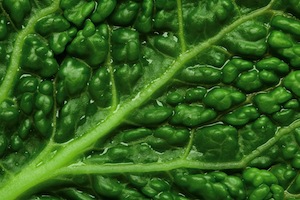 A study of the health-promoting compounds in broccoli showed that out of five different cooking methods (steaming, boiling, stir-frying followed by boiling, stir-frying alone, and microwaving), microwaving resulted in the second-lowest chlorophyll loss, retained more vitamin C than stir-frying or boiling (or a combination of the two), and retained more carotenoids than boiling and the combination of stir-frying and boiling. A test of microwaved versus conventionally cooked beef slices also found no difference in chemical composition between the two methods, and actually showed that microwaving resulted in higher “flavor scores” than using a conventional oven (yeah, I was surprised by that one too!). Research on blanching green beans, purple hull peas, yellow squash, and mustard greens found no difference in vitamin C content when microwave-blanching was used instead of conventional blanching. And, virgin olive oil has been shown to retain more alpha-tocopherol (vitamin E, an important antioxidant) when heated in a microwave versus a frying pan.
A study of the health-promoting compounds in broccoli showed that out of five different cooking methods (steaming, boiling, stir-frying followed by boiling, stir-frying alone, and microwaving), microwaving resulted in the second-lowest chlorophyll loss, retained more vitamin C than stir-frying or boiling (or a combination of the two), and retained more carotenoids than boiling and the combination of stir-frying and boiling. A test of microwaved versus conventionally cooked beef slices also found no difference in chemical composition between the two methods, and actually showed that microwaving resulted in higher “flavor scores” than using a conventional oven (yeah, I was surprised by that one too!). Research on blanching green beans, purple hull peas, yellow squash, and mustard greens found no difference in vitamin C content when microwave-blanching was used instead of conventional blanching. And, virgin olive oil has been shown to retain more alpha-tocopherol (vitamin E, an important antioxidant) when heated in a microwave versus a frying pan.
On the downside, some studies have shown a major loss of flavonoid content in broccoli and vitamin C in various foods from microwaving (especially relative to those foods in their original raw state). But, this is due mainly to the vegetables being cooked in a lot of water for an extremely long time, which results in water-soluble vitamins and certain phytochemicals seeping into the liquid (the same effect happens with boiling or using other water-based cooking methods). Plus, the destruction of some nutrients definitely isn’t unique to microwaving, since virtually any cooking method will damage heat-sensitive nutrients to some degree (see Vegetables: To Cook or Not To Cook).
So, it’s certainly possible to cherry-pick studies that show microwaving destroys certain nutrients in specific foods. But, when we take a big-picture view of the available literature, the bulk of the research suggests that microwaving is less nutritionally damaging than most other forms of cooking (it’s really the application of heat or use of water, not the microwave itself, that causes any nutritional loss). They key is to use minimal amounts of water and avoid heating the food longer than necessary (that’s of course the key with ALL cooking methods!)!
Do Microwaves Make Food Become Toxic?
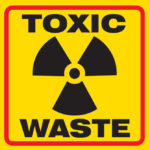 Another major myth about microwaves is that they denature protein and turn food molecules into toxic substances (including carcinogens and other compounds that damage DNA). For instance, the Ener-Chi Wellness Center writes that microwaving “fractures food molecules, rearranging their chemical composition into weird new configurations unrecognizable as food by the human body” and that “By destroying the molecular structures of food, the body cannot help but turn the food into waste—not harmless waste, but ‘nuclear waste.’” Wow, that sounds [expletive deleted] scary! Not to mention the visual of food in my stomach turning into a glowing green sludge!
Another major myth about microwaves is that they denature protein and turn food molecules into toxic substances (including carcinogens and other compounds that damage DNA). For instance, the Ener-Chi Wellness Center writes that microwaving “fractures food molecules, rearranging their chemical composition into weird new configurations unrecognizable as food by the human body” and that “By destroying the molecular structures of food, the body cannot help but turn the food into waste—not harmless waste, but ‘nuclear waste.’” Wow, that sounds [expletive deleted] scary! Not to mention the visual of food in my stomach turning into a glowing green sludge!
Once again though, the scientific literature tells a completely different story!
For example, research shows that microwave-cooked bacon has lower levels of nitrosamines (a potential carcinogen) than conventionally-cooked bacon. And, in contrast to grilling or frying, microwaving results in much lower (or non-existent) production of heterocyclic amines (HCAs) and polycyclic aromatic hydrocarbons (PAHs), two well-studied carcinogens that can form in meat or charred foods. (HCAs occur when amino acids, sugars, and creatine from muscle meat react at high temperatures, and PAHs occur when meat drippings hit an open fire and cause PAH-containing flames to shoot upwards and coat the meat, or when other foods get blackened in high heat.) In fact, microwaving meat and draining off the juices before grilling has shown to reduce the formation of carcinogens, compared to grilling the meat directly.
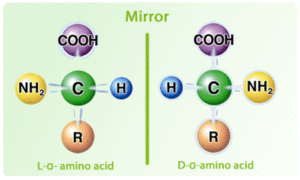 As far as protein goes, there was previously some concern that microwaving foods like milk could transform L-amino acids into D-amino acids (which are less abundant in living organisms and less usable by cells), and therefore cause toxicity and make protein less bioavailable. But, subsequent research showed that this only happens at extremely high temperatures, beyond what household microwaves produce, and therefore shouldn’t be a source of fear or worry.
As far as protein goes, there was previously some concern that microwaving foods like milk could transform L-amino acids into D-amino acids (which are less abundant in living organisms and less usable by cells), and therefore cause toxicity and make protein less bioavailable. But, subsequent research showed that this only happens at extremely high temperatures, beyond what household microwaves produce, and therefore shouldn’t be a source of fear or worry.
And, as with other nutrients, any type of cooking has the ability to “denature” protein (which just means the protein loses its three-dimensional structure—not that it becomes toxic!), such as an egg white solidifying and becoming opaque on the pan.
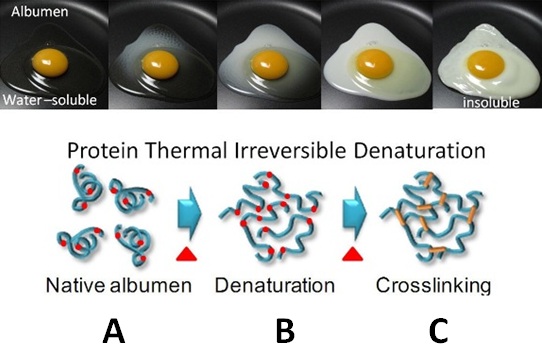
In some cases, denaturing protein can be extremely beneficial; for example, extensively heated milk and egg proteins can make them tolerable for people who otherwise have milk and egg allergies (and even working therapeutically to increase their tolerance of those foods!). Many denatured proteins are also more biologically available and are easier for our digestive enzymes to digest. In fact, the advent of cooking is considered to be the major early human discovery that propelled our evolution forward and allowed us to develop the big brains we enjoy today (see The Diet We’re Meant to Eat, Part 1: Evolution & Hunter-Gatherers).
Don’t Microwaves Kill Enzymes and Make Food “Dead”?
There’s no shortage of scary-sounding descriptions out there about microwaves “killing” food or destroying enzymes. For example:
- Natural News states that “Microwaved food is not merely ‘dead’ food at every level, it is food that has been molecularly deconstructed, leaving nothing but empty calories, fiber and minerals.”
- The Natural Society claims “microwaving food, in effect, potentially destroys and depletes the life energy, rendering the food completely dead and lifeless.”
- The Foodie Guru blog states that “A nutritious plate of food once heated inside a microwave evolve into ‘dead food’ due to the dielectric heating of microwaves.”
And guess what? It’s true! Microwaving changes enzyme structures and “kills” food that has the potential for life (such as raw nuts, seeds, grains, and legumes that could potentially sprout and become new plants). BUT, that effect isn’t exclusive to microwaves: that’s just what cooking does in general. It doesn’t matter if we’re using a microwave oven, a conventional stovetop, or an indigenous solar oven! As with protein molecules, exposing enzymes to high heat from any source can alter their shape, making them unable to perform the functions they typically carry out.
And there’s absolutely nothing wrong with that! Most enzymes in food are only used by the food itself (such as enzymes in an apple that cause it to ripen), and even if they’re intact when we swallow them, quickly get destroyed by our stomach acid and other digestive processes—rendering them useless by the time they reach the bloodstream and travel to cells. Only a very small subset of enzymes in food are known to have a physiological benefit to us (like the bromelain in pineapple stems, or papain in papaya).
So, the idea of eating “dead” food really isn’t so scary. There’s nothing about microwaves that kills food in any sort of unique way compared to other cooking methods.
What About the Studies Showing Harm?

The evidence that microwaves are harmful comes from a handful of debunked or misinterpreted studies—the most famous being one from the 1980s, conducted by Swiss chemist Hans Hertel. In this study, Hertel and seven other people stayed in a hotel resort for eight weeks. Every two to five days, the participants ate one of the following foods on an empty stomach:
- Raw milk
- The same milk, conventionally cooked
- The same milk, microwaved
- Pasteurized milk
- Raw organic vegetables
- The same vegetables, conventionally cooked
- The same vegetables, microwaved
- The same vegetables, frozen and defrosted in the microwave
The volunteers had their blood drawn before eating each food, 15 minutes after eating, and two hours after eating to test for any changes. Supposedly, after consuming the microwaved food, the participants’ blood showed a decrease in HDL cholesterol, a sharper-than-usual decrease in white blood cells, and lower hemoglobin values—all of which were measured at the lower limits of normal (so, not totally out of range). Hertel interpreted this as indicating “the initial stage of a pathological process such as occurs at the start of a cancerous condition.” (And, even though Hertel never went as far as claiming that microwaving food causes cancer, plenty of people have misconstrued the study that way!)
That might sound scary, but if we look a little closer, we can see this study is riddled with problems. For one, it was never peer-reviewed nor published in any legitimate scientific journals (and since we don’t know Hertel’s exact methodology, it’s really hard to assess how robustly the study was conducted). Some unverified accounts claim that Hertel was “gagged” by a Swiss microwave trade organization that forbade him to publish his findings any further, and his research has simply been covered up by a powerful cooking industry. But, this raises the question of why researchers who study carcinogen production from grilling aren’t similarly threatened by grill organizations! Or why researchers exposing the health risks of BPA aren’t threatened by the Big Plastic Bottles Lobby. (Although, this does bring me to an aside: putting hot foods in plastic containers or heating food in plastic containers in the microwave can cause more BPA and phthalates to leach into food, and that IS a health concern. Glass, glass ceramics, and ceramics with microwave-safe glazes are the best choices for cooking/heating foods in the microwave.)
On top of that, the study’s design was extremely weak: it only used eight people, wasn’t blinded or rigorously controlled, used a very limited selection of foods, and measured post-meal blood values that don’t necessarily reflect a health risk. And most importantly, no researchers have ever replicated or confirmed the study’s findings in the more than three decades since the experiment was conducted (despite plenty of literature on microwave cooking emerging in those years!). If there was even a sliver of scientific validity to these results, other researchers would have taken up the banner to expand on them. It’s also worth noting that one of the lead researchers later recanted, and no longer supports the study’s conclusions. This just doesn’t meet even the barest minimum standard to quality as “evidence” for gauging the safety of microwaves.

Another seemingly alarming report occasionally makes the rounds on email and social media, about an experiment where one plant was given water boiled on a stove (and then cooled), while a second identical plant was given water boiled in a microwave (and then cooled). The results purportedly showed that the microwave-watered plant failed to thrive (and was essentially dead by day 9 of the experiment), while the other plant given stove-boiled water was healthy and green.
But, Snopes.com has thoroughly debunked this experiment (here)! For instance, the images appear to be digitally faked. And even if the experiment had been real (which we have no proof of), numerous other factors could have caused the results—such as one plant/seed being compromised from the very beginning, the container used for microwaving leaking a substance into the water that harmed the plant, differences in the soil for each plant, differences in how evenly the water was heated and cooled (leading one plant to receive warmer water than the other), influence by the experiment conductor (who wasn’t blinded and embarked on the experiment already believing microwaves are harmful), or various other environmental factors like unequal light and heat exposure, insects, and pests. In order for an experiment like this to be legitimate, it would need to use a much higher sample size, be blinded (so that the person watering the plants doesn’t subtly influence the study’s results), and rigorously ensure all variables were kept the same except for the method of heating the water.
Lastly, there have occasionally been stories about microwaved baby formula being hazardous to infants, compared to formula heated on a conventional stovetop. There’s a grain of truth in this—but not because microwaves cause toxic changes in the nutritional value or chemical makeup of baby formula! The main danger from microwaving formula is uneven heating (producing hot spots in the liquid) and trapped steam, which can result in burns and scald injuries. But, this can easily be resolved by following the microwave instructions on the formula container (which typically involve heating the formula for brief periods and then mixing it, gently shaking it after heating for better temperature distribution, or stirring the formula to get rid of hot spots).
What About Standing Close to a Microwave While it’s Running?
One other area of concern with microwaves has nothing to do with their effect on food, but their direct effects on our bodies when we’re standing nearby! Some people claim that microwaves are dangerous to be around when they’re running, because they leak radiation into the surrounding air.
First of all, let’s all remember that microwave radiation is non-ionizing (I’m thinking of attempting to rebrand ionizing versus non-ionizing radiation as bad versus non-bad radiation!). The sound we hear and any air movement we feel around the microwave when the microwave is on is not radiation leaking out; it’s just the fan blowing air. And, more importantly, as long as a microwave isn’t damaged (like a broken handle or cracked door), the design prevents microwaves from exiting the oven and heating up your house. Microwaves have a form of inner shielding made up of a mesh-like screen with holes about 1 mm across, which prevents microwave radiation (which has a very large wavelength of 120 mm) from exiting (for the nerds: it’s a Faraday cage!). By contrast, visible light has a much smaller wavelength, which is why we can look into the microwave and see what’s inside even though the microwaves themselves can’t get out.
The FDA carries out an electronic product radiation control program that makes sure emissions from microwaves (and other devices) aren’t hazardous to public health—capping the upper limit at 5 milliwatts (mW) of microwave radiation per square centimeter, when measured two inches from the oven surface. (At 20 inches away from the microwave, the amount of radiation would be only 1/100th of that value!) And 5mW of radiation per square centimeter is way, way below the level that’s been shown to harm humans—so even if we were to stick our faces a few inches from the oven while it’s running, we’d still be exposed to only minute microwave radiation doses that would be highly unlikely to hurt us. By the way, if you were able to stick your hand in a microwave while it was running, the harm you would suffer would be burns, not radiation poisoning (remember: non-bad radiation).
In order to make sure microwaves are running safely and won’t be emitting more radiation than the safe upper limit, we should follow the manufacturer instructions for operating procedures and safety precautions (so that we don’t unintentionally damage the microwave). We also shouldn’t operate the microwave if its door won’t properly close or is bent or warped (or shows other signs of damage), or if the door’s hinges, latch, or seals look damaged. And, it’s best to avoid putting aluminum or metal pans inside the microwave, since those can also damage the machine. There’s absolutely no reason we would need to leave the room while the microwave is running.
The Take-Home Message
Using microwaves isn’t any more harmful than other cooking methods, and foods cooked in a microwave may actually retain more nutrients and contain fewer carcinogens than other common forms of cooking. The hazards typically ascribed to microwaves are either based on heresy or on weak, non-replicated, or debunked science.
The Paleo diet may have its foundations in Paleoanthropology, but every facet is equally supported by contemporary biology and physiology research. As such, following a Paleo template isn’t about historical re-enactment, but rather about making the best choices as often as possible within a framework that provides a detailed understanding of how compounds in foods can support or undermine health. The importance of a nutrient-focused anti-inflammatory diet (which Paleo is) is also an important message to spread in order to improve public health. But, for many, following even the most generous and flexible versions of the Paleo diet is a big ask. I think it’s important not to ask more than can be supported by science. Ditching gluten and processed foods while honing in on a diet rich in a diversity of vegetables, seafood, quality meats including offal, fruit, eggs, nuts and seeds are principles well-supported by the scientific literature. Avoiding the use of a major convenience appliance, one that can make all the difference in the world between Paleo being doable and sustainable over the long term for many people, is not.
As long as the microwave oven isn’t damaged, there’s truly no scientific reason to fear or avoid microwaves. So, go ahead and enjoy the convenience when you need a quick way to cook or heat up your food!
Citations
“Chemicals in Meat Cooked at High Temperatures and Cancer Risk.” National Institutes of Health: National Cancer Institute. 2015 Oct.
Dixon JJ, et al. “Severe burns resulting from an exploding teat on a bottle of infant formula milk heated in a microwave oven.” Burns. 1997 May;23(3):268-9.
El-Shimi N. “Influence of microwave and conventional cooking and reheating on sensory and chemical characteristics of roast beef.” Food Chemistry. 1992;45(1):11-14.
Hoffman CJ & Zabik ME. “Effects of microwave cooking/reheating on nutrients and food systems: a review of recent studies.” J Am Diet Assoc. 1985 Aug;85(8):922-6.
Klein BP. “Retention of nutrients in microwave-cooked foods.” Bol Asoc Med P R. 1989 Jul;81(7):277-9.
Knize MG & Felton JS. “Formation and human risk of carcinogenic heterocyclic amines formed from natural precursors in meat .” Nutrition Reviews. 2005;63(5):158-165.
Lane RH, et al. “Ascorbic acid retention of selected vegetables blanched by microwave and conventional methods.” Journal of Food Quality. 1985;8(2-3):139-144.
“Radiation-Emitting Products: Microwave Oven Radiation.” U.S. Food and Drug Administration. October 8, 2014.
Nowak-Wegrzyn A & Fiocchi A. “Rare, medium, or well done? The effect of heating and food matrix on food protein allergenicity.” Curr Opin Allergy Clin Immunol. 2009 Jun;9(3):234-7.
Ovesen L, et al. “The effect of microwave heating on vitamins B1 and E, and linoleic and linolenic acids, and immunoglobulins in human milk.” Int J Food Sci Nutr. 1996 Sep;47(5):427-36.
Quan R, et al. “Effects of microwave radiation on anti-infective factors in human milk.” Pediatrics. 1992;89(4):
Ruiz-Lopez MD, et al. “Stability of α-tocopherol in virgin olive oil during microwave heating.” LWT: Food Science and Technology. 1995;28(6):644-646.
Schnepf M & Driskell J. “Sensory attributes and nutrient retention in selected vegetables prepared by conventional and microwave methods.” Journal of Food Quality. 1994;17(2):87-99.
Sieber R, et al. “Heat treatment of milk in domestic microwave ovens.” International Dairy Journal. 1996;6(3):231-246.
Sigman-Grant M, et al. “Microwave heating of infant formula: a dilemma resolved.” Pediatrics. 1992 Sep;90(3):412-5.
Song L & Thornalley PJ. “Effect of storage, processing and cooking on glucosinolate content of Brassica vegetables.” Food Chem Toxicol. 2007 Feb;45(2):216-24.
Uherová R, et al. “The effect of microwave heating on retention of some B vitamins.” Food Chemistry. 1993;46(3):293-295.
Vallejo F, et al. “Phenolic compound contents in edible parts of broccoli inflorescences after domestic cooking.” Journal of the Science of Food and Agriculture. 2003;(83)14:1511-1516.
Yuan GF, et al. “Effects of different cooking methods on health-promoting compounds of broccoli.” J Zhejiang Univ Sci B. 2009 Aug;10(8):580-8.

